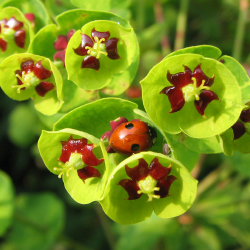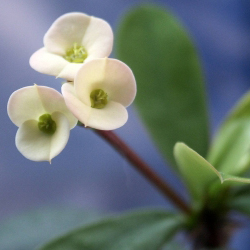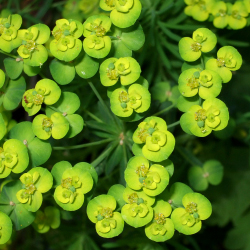Probably the most commonly known euphorbia is the Christmas Poinsettia. However, unlike that plant, many euphorbia species grow in our zone as evergreen perennials. Available in a variety of heights, sizes and colors, euphorbias fill a number of roles in the landscape. They can be used as a low hedge, background plants in a mass setting, groundcover, and they’re great in containers!
Blossoms appear in spring and usually last through most of the summer. Colors include yellows and oranges. Many plants have red stems.
Leaf colors variations include greens from light to dark, reds, pink, orange, bright lime green, blue-grey, and variegated. Unbelievably, as fall temperatures drop, the leaf colors intensify to more brilliant hues as though on fire.
Additionally, they are deer resistant due to the sap inside the plant. However, the sap of this plant can irritate some people. Use gloves when trimming or transplanting. To be on the safe side, treat the plant as poisonous.
Also known as a “spurge” plant, they grow best in full sun or partial shade. The most important requirement is well-drained soil. They are generally drought tolerant after establishment. Maintenance is minimal. To reduce legginess, prune back after blooming to keep the plant full and lush. It can be pruned back at any time of the year to within 6” of the ground if it becomes unattractive.









